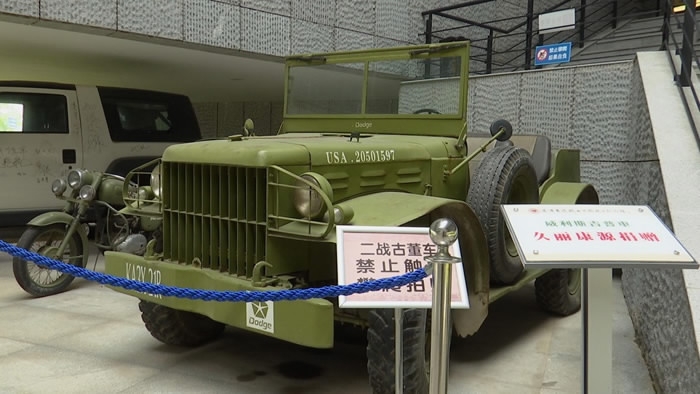
Politics
19:21, 30-Sep-2017
Martyrs' Day: Remembering overseas Chinese who became wartime heroes
By Yang Jinghao, Li Yang

Seventy-four-year-old Ye Xiaodong has been voluntarily working as a keeper of a monument in Wanding, a small town bordering Myanmar in southwest China's Yunnan Province since 2005.
The monument was built in honor of overseas Chinese living in Southeast Asia who returned to China to join the fight against Japanese aggression during World War II.
The names of the patriots are inscribed on a memorial wall behind the monument.
"My father's name is also inscribed on the wall. I've never seen my father, but every time I see his name here, I feel like I've met him in person. It is my honor to guard and maintain the monument," Ye told CGTN.

A monument in honor of the overseas Chinese drivers and mechanics from Southeast Asia who joined the fight against Japanese aggression during World War II stands in Wanding, Yunnan Province, southwest China. /CGTN Photo
A monument in honor of the overseas Chinese drivers and mechanics from Southeast Asia who joined the fight against Japanese aggression during World War II stands in Wanding, Yunnan Province, southwest China. /CGTN Photo
In 1939, when the most of China's transport routes were cut off by Japanese troops, some 3,200 overseas Chinese returned to the country from Southeast Asia, with the majority working on Burma Road as drivers and mechanics. Ye's father, Chen Tuanyuan, was one of the drivers transporting combat supplies from Myanmar (known as Burma at that time) to different battlegrounds across China.
Construction of the Burma Road, which stretches from Kunming, the capital city of Yunnan Province, to Lashio in Burma, began in December 1937. It became the only passage connecting China and the outside world after the Yunnan-Vietnam Railway was destroyed in 1940.
In 1944, Ye's father was buried alive by Japanese invaders. Ye was still an infant.
"I was only three-month-old at that time. I learned later that my father was betrayed by traitors when he was hiding in a local village of Dai ethnic minority," said Ye.

A car used to transport combat supplies on the Burma Road during the war is displayed in the memorial hall in Wanding, a town bordering Myanmar. /CGTN Photo
A car used to transport combat supplies on the Burma Road during the war is displayed in the memorial hall in Wanding, a town bordering Myanmar. /CGTN Photo
More than 1,800 of those who returned sacrificed their lives along the road. To commemorate their contributions, a memorial hall was built next to the monument in July.
"This history has been out of the sight of most people over the past decades. I believe the establishment of this memorial will be conducive to making the touching stories known to more people," said Luo Yunhui, curator of the memorial hall.
Ye is pleased with the establishment of the memorial, but one small detail weighs on his heart – the absence of his father's photo on the "hero wall."

Photos of the overseas Chinese drivers and mechanics from Southeast Asia who joined the fight against Japanese aggression are displayed in the memorial hall in the town of Wanding. /CGTN Photo
Photos of the overseas Chinese drivers and mechanics from Southeast Asia who joined the fight against Japanese aggression are displayed in the memorial hall in the town of Wanding. /CGTN Photo
"The photo up there is mine because nothing related to him was left following the troubled times. His fellow soldiers told me that I look like my father so much, so the hall decided to use my photo as a substitute," Ye said.
Ye added that he wished he could find a photo of his father one day, though it seems very difficult. In fact, he made attempts to trace anything about his father over the past years, even traveling to where his father used to live overseas. But he found nothing.
Ye said he would never give up the hope and would continue to promote the spirit of these heroes by serving the monument and the memorial hall.
The 14-year War of Resistance against Japanese Aggression was a poignant part of Chinese history, with hundreds of thousands of Chinese soldiers losing their lives. Now, only a few of these drivers and mechanics from Southeast Asia are still alive, living in China and some other countries.
2471km

SITEMAP
Copyright © 2018 CGTN. Beijing ICP prepared NO.16065310-3
Copyright © 2018 CGTN. Beijing ICP prepared NO.16065310-3